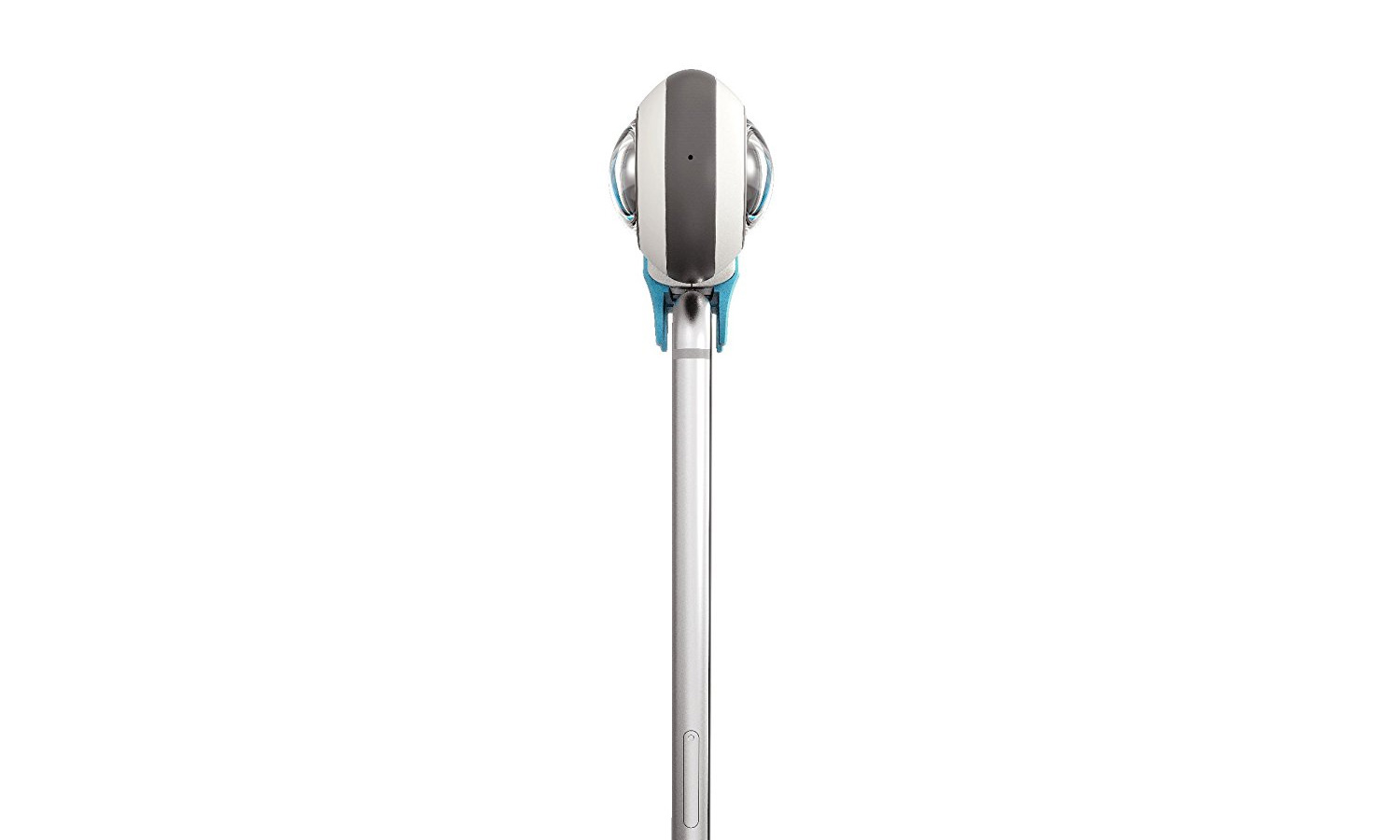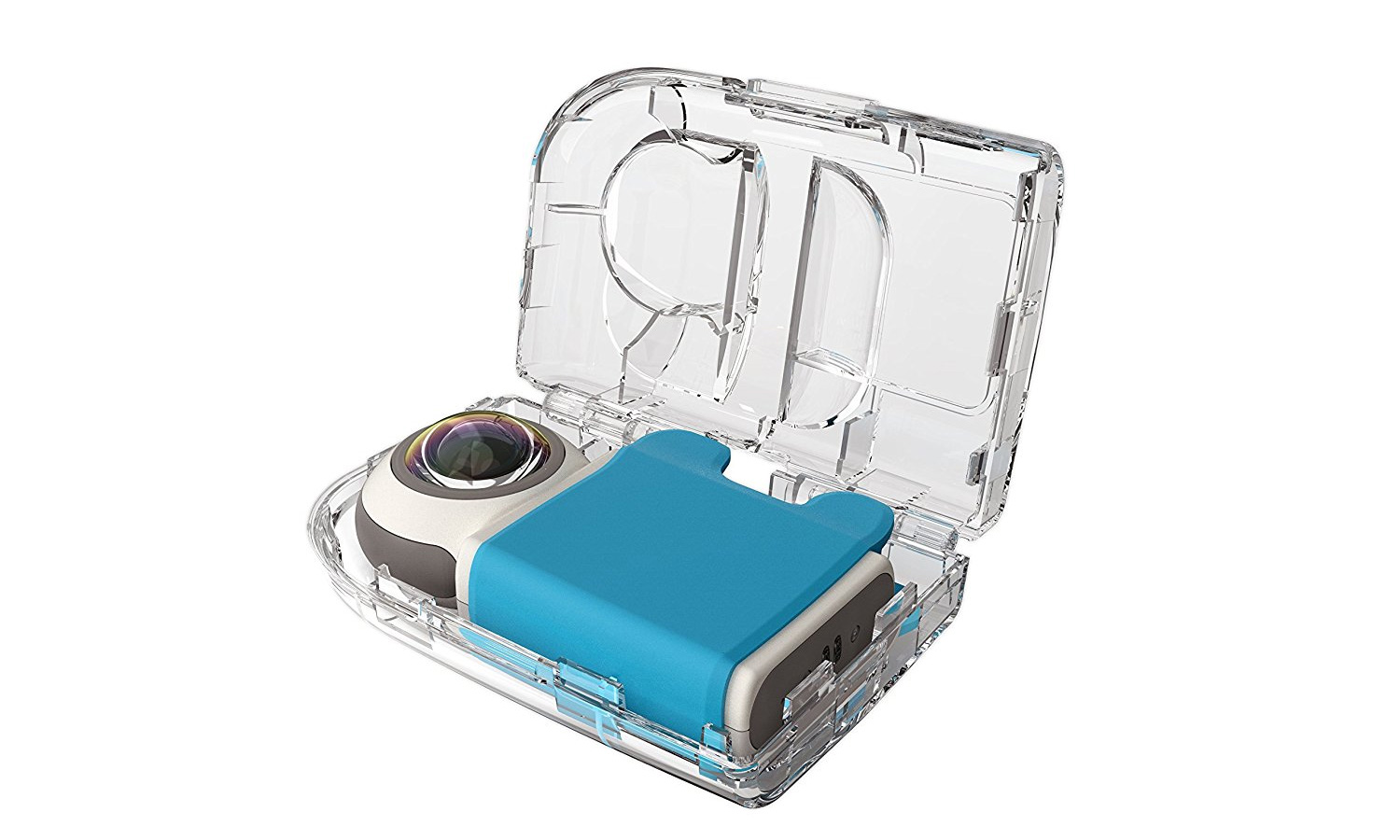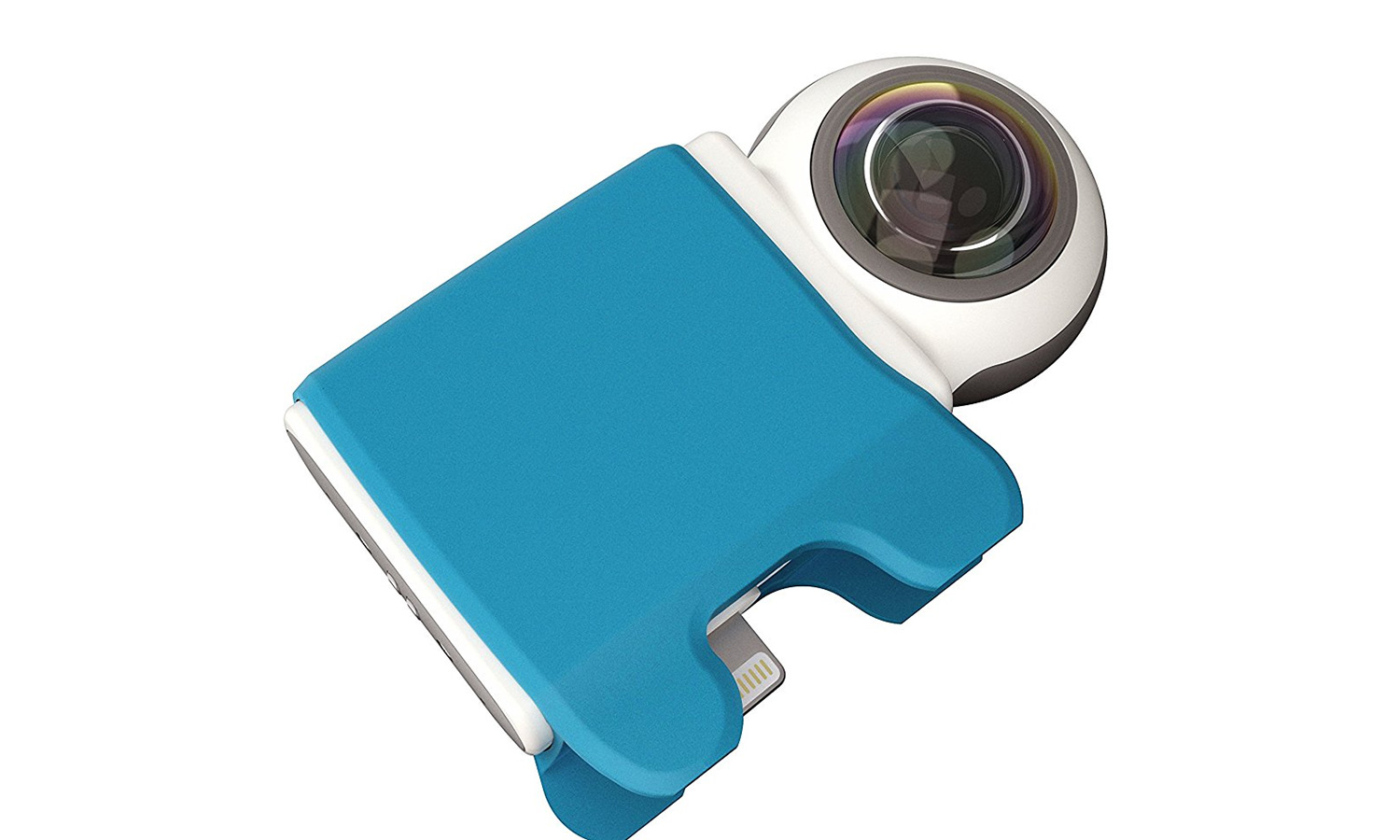Tom's Guide Verdict
The Giroptic iO is a pocketable 360-degree camera, but it's a bit awkward to use.
Pros
- +
Supports Facebook Live streaming
- +
Small and portable
- +
Easy to use
- +
iOS and Android-compatible
Cons
- -
Can't be used as stand-alone camera
- -
Need to hold phone upside down
Why you can trust Tom's Guide
The first-generation 360-degree cams were bulky, stand-alone devices, but lately, a growing number of these all-seeing cameras are small enough to clip onto your smartphone. Like their bigger brethren, these cameras let you take VR-ready photos and videos and share this media immediately to Facebook and YouTube.
Giroptic, one of the first companies on the market with a 360-degree camera, has put out a second version, the Giroptic iO, which attaches to the Lightning port on an iOS device (the company also makes Android-compatible models). Available for $249, it takes very good photos and videos, though I noticed a few limitations with this pricey camera.
Editor's Note: This review was updated to reflect the fact that the Giroptic iO is also available for Android devices.
Design
The iO camera is much smaller than the original Giroptic camera. Whereas the latter was the size (and shape) of a small pear, the iO is about the size of a Tic Tac container with a ping-pong ball attached to one end.

I tested the iOS-compatible version of the Giroptic iO, which has a micro USB port (for charging) and an Apple Lightning connector. You can also purchase Android-compatible models with either a microUSB or a USB Type-C port.

While it has a built-in battery, the iO camera can't be used as a stand-alone device; you have to plug it into your iPhone. This is a bit of a bummer, especially since you can't use the iO camera once its battery (good for about 1 hour and 15 minutes) runs out. The Insta360 Nano and upcoming second-gen Samsung Gear 360 also have a built-in batteries, but those cameras can be used independently of your smartphone, a big plus.

Like with the Insta360 Nano camera, when you plug the Giroptic iO camera into your iPhone, you then have to turn your phone upside down. It's an imperfect solution, and one that's going to keep some consumers from buying these cameras.
MORE: 360 Camera Buying Guide
Performance
The Giroptic iO camera takes photos at a resolution of 4K (3840 x 1920), which is higher than the resolutions of the LG360 (2560 x 1280) and Insta360 Nano (3040 x 1520), but lower than that of the second-generation Samsung Gear 360 (5472 x 2736).
The blue in my ski jacket, as well as the pink of a friend's jacket, really popped in a photo taken outdoors at a ski resort. Fortunately, the bright snow all around us didn't blow out the image, though trees in the background looked a bit blotchy.
The colors in photos taken under an overcast sky had a dull quality; the pink of cherry blossoms looked muted, and the Giroptic also had trouble picking up all the details of a stone archway.
There was also a pinkish outline around gray buildings, and the stitching between the two lenses was very obvious, mainly because one lens was pointing in the direction of the sun and the other was not.
I also shot a 1080p video while skiing, but I wasn't very impressed with the results. Nothing was crisp; trees were less defined than in a Bob Ross painting, and people skiing by looked blotchy. As with still photos, I could clearly see the stitching between the two lenses, especially where my hands held my phone.
Not too surprisingly, the camera picked up a lot of wind noise as my speed increased; this happens with almost every camera, so I'm not going to hold that against Giroptic.
Because the Giroptic camera is perched on top (or rather, on the bottom) of a phone, I found I needed two hands to take a photo — one hand for holding onto my phone, and the other to press the shutter button in the app.
As a result, all my photos showed both of my hands with one of them split in two, a side effect of the camera unsuccessfully stitching two images together. Additionally, I couldn't extend the camera out further by holding it in one hand, as I could with the Samsung Gear 360 and LG 360.
From Giroptic's app, you can upload images to Facebook, Instagram, Twitter and Flickr. Additionally, you can live-stream to YouTube, Facebook and Periscope.
Within the app, you can change the perspective of photos to Flat, Little Planet or Spherical. There's also an option to view your images in a VR headset. The app also has an Explore section, which lets you view 360 photos taken by other Giroptic users, making this camera an inexpensive way to travel the world.
The Giroptic iO comes with a small, clear-plastic carrying case, which folds flat and has two grooves, so that it can act as a stand for your iPhone or iPad. It's too bad you can't keep the camera in the case and still attach it to your iPhone.
MORE: Best Lens Kits for iPhone Photographers
Bottom Line
At $249, the Giroptic iO camera costs about $50 more than similar smartphone-attachable, 360-degree cameras. It takes pretty good photos and video, but I'm not thrilled with its design. For one, you have to hold your phone upside down to use this camera, and even though it has a battery, it won't work unless it's connected to your phone.

For those reasons, I prefer the Insta360 Nano, even with the latter's lower resolution. It might also be worth waiting for the second-generation Samsung Gear 360, which also works as a stand-alone device. Still, the Giroptic iO is a good second-generation 360-degree camera for smartphone owners.

Michael A. Prospero is the U.S. Editor-in-Chief for Tom’s Guide. He oversees all evergreen content and oversees the Homes, Smart Home, and Fitness/Wearables categories for the site. In his spare time, he also tests out the latest drones, electric scooters, and smart home gadgets, such as video doorbells. Before his tenure at Tom's Guide, he was the Reviews Editor for Laptop Magazine, a reporter at Fast Company, the Times of Trenton, and, many eons back, an intern at George magazine. He received his undergraduate degree from Boston College, where he worked on the campus newspaper The Heights, and then attended the Columbia University school of Journalism. When he’s not testing out the latest running watch, electric scooter, or skiing or training for a marathon, he’s probably using the latest sous vide machine, smoker, or pizza oven, to the delight — or chagrin — of his family.

